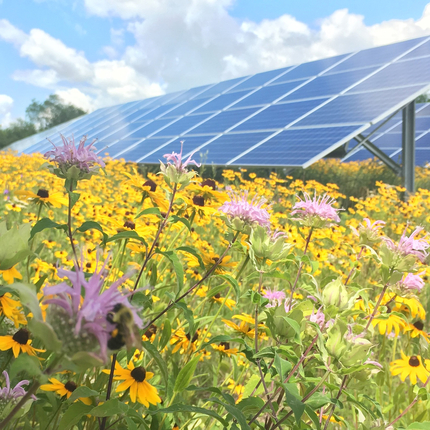Across the U.S., the solar energy industry is booming. In South Dakota, two proposed utility-scale solar projects have the capability to increase the state’s installed solar capacity from 2 megawatts to more than 200 megawatts within the next two years.
Solar project sites, which can occupy multiple acres of land, provide an opportunity to combine clean energy and conservation. By incorporating native vegetation into solar project design, project owners can demonstrate a commitment to environmental stewardship while also saving on management costs.
Perennial vegetation provides habitat for wildlife and pollinators, can improve soil and water quality, reduce erosion, and sequestre carbon. It costs three times less to manage than turfgrass. Livestock can be incorporated into management practices, and by utilizing grazing instead of mowing, farmers can diversify revenues without taking land out of production.
Solar panels need to be raised to around 48 inches off the ground to accommodate perennial vegetation. This change typically has minimal effect on the overall project budget. Selecting a seed mix that has a variety of plants with staggered bloom times will provide the most benefits for pollinators. A mix of grasses and forbs can promote habitat for game birds, such as pheasants. The state offers cost-sharing and other initiatives designed to help create more wildlife and pollinator habitat on private land through the South Dakota Habitat Pays program.
Click here to download the "Native Vegetation and Solar Projects in South Dakota" fact sheet.
Feature photo provided by the Center for Pollinators in Energy.





